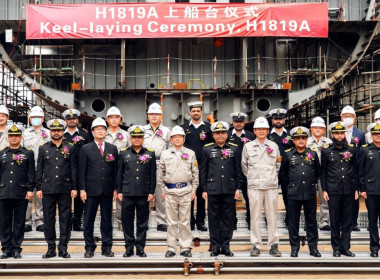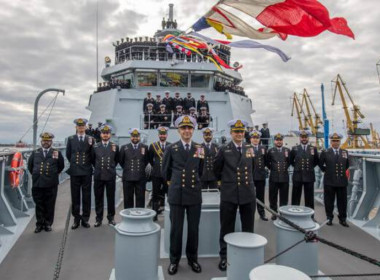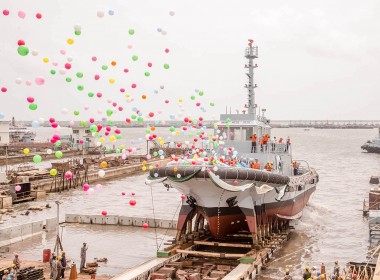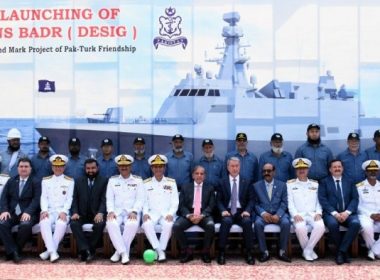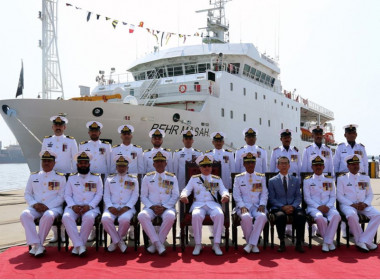COLUMN | The Pakistan Navy: a growing regional force [Naval Gazing]

Formed in 1947, the Pakistan Navy (PN) is tasked primarily with the protection of Pakistan’s sea lines of communication, support of Islamabad’s maritime policies, providing a submarine-based second strike capability, multinational task force operations, and carrying out humanitarian missions. It also carries out regular defence diplomacy visits, particularly to fellow Islamic nations.
The PN includes an air arm, a marine corps, and the Pakistan Maritime Safety Agency, a coast guard-type organisation that is currently being bolstered by the commissioning of Chinese-designed, Pakistan-built patrol ships.
The PN fought naval wars with India in 1965 and 1971, and reputedly continues to engage in covert combat operations.
A modernising force
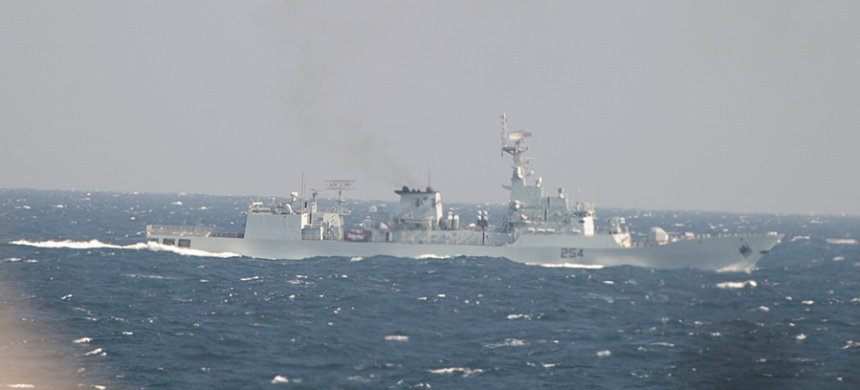
The service previously relied upon secondhand warships acquired from western navies, but it now looks mainly to acquire vessels from China and Turkey as well as indigenous manufacturers.
Latest assets to join the growing PN order of battle are the four Tughril-class multi-role frigates, based on the People Liberation Army Navy’s (PLA-N) Type 054 frigates built by Hudong-Zhonghua Shipbuilding and China State Shipbuilding Corporation. The armament of these 4,200-tonne, 27-knot, diesel-powered warships consists of Chinese-manufactured LY-80N anti-shipping cruise missiles (ASCM), CM-302 surface-to-air missiles (SAM), anti-submarine rockets, torpedoes, two close-in weapon systems, and a 76mm gun. A Z-9 anti-submarine helicopter can also be carried, while Chinese search and fire control radars are fitted.
Three of the Zulfiquar-class frigates were built by Hudong-Zhonghua and are based on the design of the Type 053H frigate. One was constructed at Karachi Shipyard and Engineering Works in Pakistan. Armament includes C-802 ASCMs and FM-90M SAMs. There is a flight deck and hangar for a Z-9 helicopter.
The sole surviving old second-hand frigate is PNS Alamgir, the former US Navy Oliver Hazard Perry-class frigate USS McInerney.
The PN frigate inventory is due to be boosted significantly from 2030 with the addition of a planned six Jinnah-class frigates to be built in Karachi to a Turkish design under a technology transfer agreement.
Corvettes, patrol ships, and fast attack craft
Already under construction in Turkey at the Istanbul Shipyard are two Babur-class corvettes with two further examples in build at the Karachi Shipyard.
Two 2,300-tonne Yarmook-class patrol ships, built by Dutch shipbuilder Damen at its Galati, Romania shipyard, were commissioned from 2020. They feature a 30mm cannon, a number of machine guns, and a helicopter flight deck. Indigenous Harbah ASCMs are due to be fitted.
On PN strength are more than 50 missile or gun-armed fast attack, interception, and assault craft, many indigenously-built, others acquired from a range of overseas suppliers. Local construction of such vessels continues. There are also four minehunters of French design, as well as a squadron of UK-built Griffon Hoverwork 2000 TD hovercraft for coastal and riverine patrol.
A focus on submarines
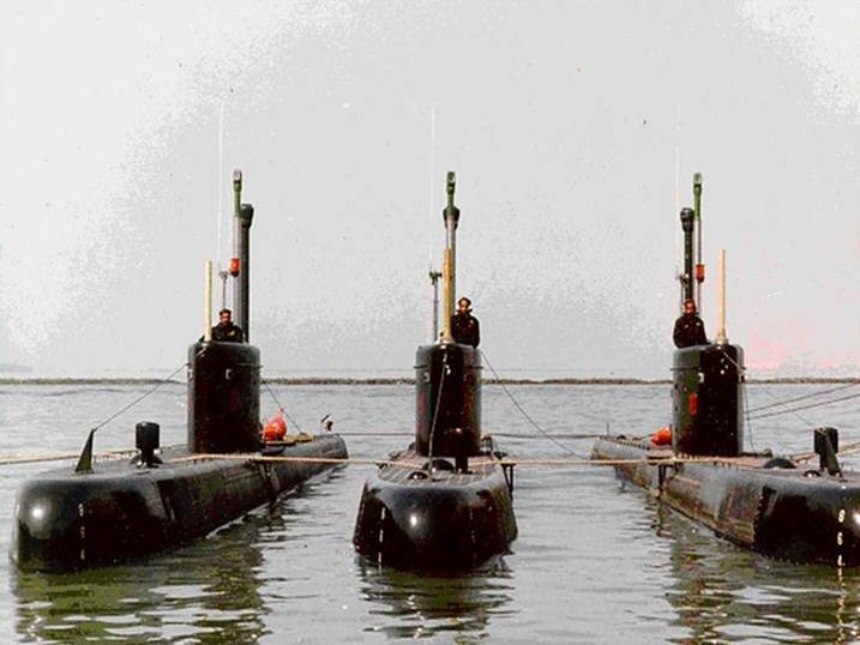
The PN’s submarine arm is an increasingly important actor on the Asia naval stage. There are five French-designed Agosta-class boats, two of which were built by Karachi Shipyard. The three most modern of these subs feature air-independent propulsion (AIP) systems and can be armed with Babur III nuclear-warhead capable, underwater-launched ballistic missiles.
There are also three Italian-designed, indigenously-built midget submarines used for covert surveillance and insertion of Special Forces.
A major upgrade of the PN’s underwater capabilities is underway in the form of a project to acquire eight new-build Hangor-class diesel-electric attack submarines based on the PLA-N’s Yuan-class. Four are to be built in China, while four will be built in Pakistan. They will feature AIP and armament will include Babur III missiles. At least four are reportedly already under construction.
The service has a credible replenishment-at-sea capability to facilitate long-range operations. This capability is provided by two large tankers – one acquired from China, and one built locally. There are plans to build another such vessel in Pakistan.
The PN’s surface escort and submarine fleets are largely modern and well-balanced, but there are obvious capability gaps with respect to dedicated aviation platforms and amphibious warfare vessels.
Islamabad wishes to eventually acquire nuclear-powered submarines in order to catch up with its great rival, India, but funding and political issues have so far frustrated that aim. The PN is nevertheless set to become an increasingly capable, versatile, and influential regional force.


